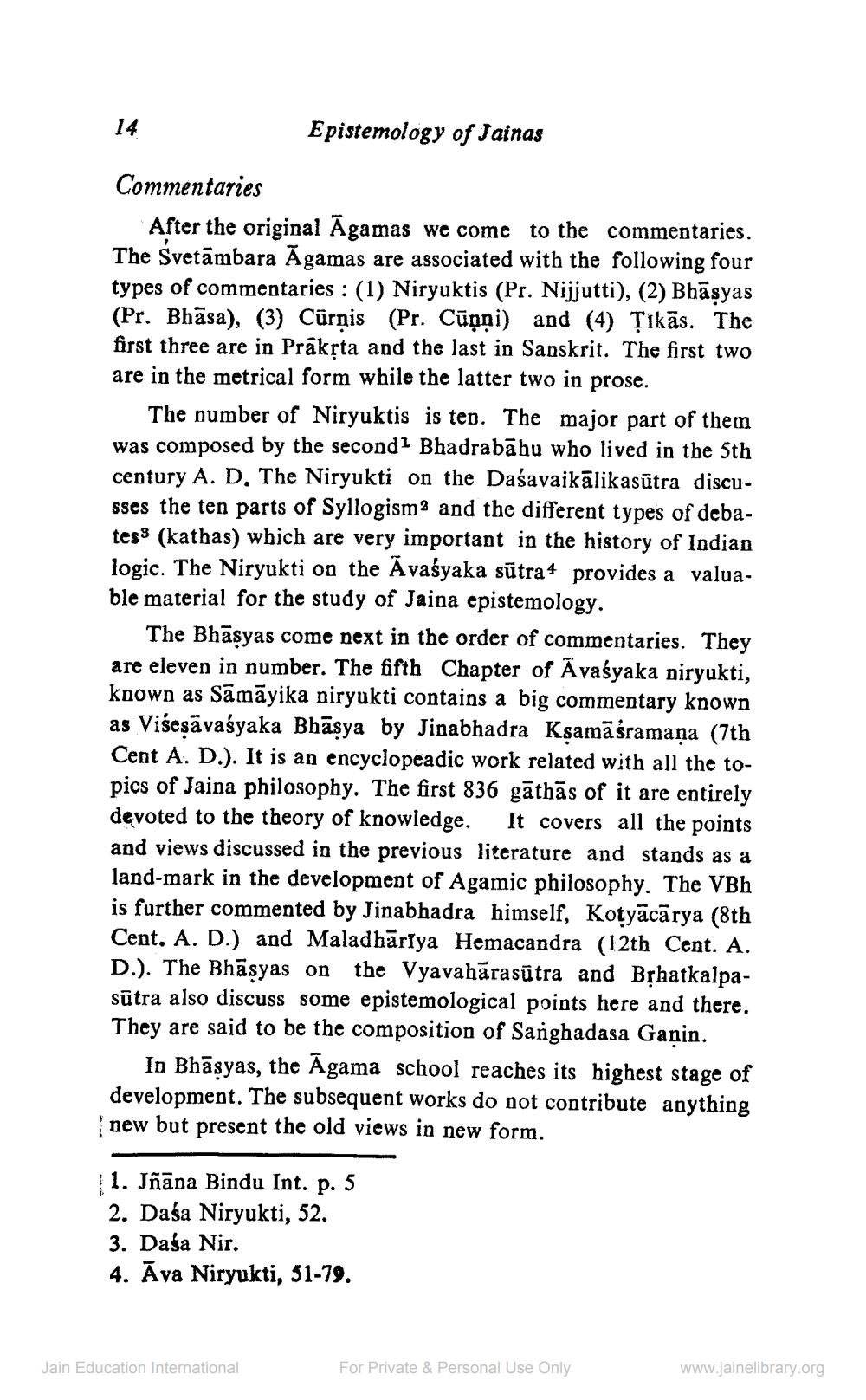________________
14
Epistemology of Jainas
Commentaries
After the original Agamas we come to the commentaries. The Svetambara Agamas are associated with the following four types of commentaries: (1) Niryuktis (Pr. Nijjutti), (2) Bhāṣyas (Pr. Bhāsa), (3) Cürnis (Pr. Cunni) and (4) Tikās. The first three are in Prakṛta and the last in Sanskrit. The first two are in the metrical form while the latter two in prose.
The number of Niryuktis is ten. The major part of them was composed by the second1 Bhadrabahu who lived in the 5th century A. D. The Niryukti on the Daśavaikālikasūtra discusses the ten parts of Syllogism2 and the different types of debates (kathas) which are very important in the history of Indian logic. The Niryukti on the Avaśyaka sūtra provides a valuable material for the study of Jaina epistemology.
The Bhāṣyas come next in the order of commentaries. They are eleven in number. The fifth Chapter of Avaśyaka niryukti, known as Sāmāyika niryukti contains a big commentary known as Viseṣāvaśyaka Bhāṣya by Jinabhadra Kṣamasramaṇa (7th Cent A. D.). It is an encyclopeadic work related with all the topics of Jaina philosophy. The first 836 gathas of it are entirely devoted to the theory of knowledge. It covers all the points and views discussed in the previous literature and stands as a land-mark in the development of Agamic philosophy. The VBh is further commented by Jinabhadra himself, Kotyācārya (8th Cent. A. D.) and Maladhariya Hemacandra (12th Cent. A. D.). The Bhāṣyas on the Vyavaharasūtra and Bṛhatkalpasūtra also discuss some epistemological points here and there. They are said to be the composition of Sanghadasa Ganin.
In Bhasyas, the Agama school reaches its highest stage of development. The subsequent works do not contribute anything new but present the old views in new form.
1. Jñāna Bindu Int. p. 5
2. Dasa Niryukti, 52.
3. Dasa Nir.
4. Ava Niryukti, 51-79.
Jain Education International
For Private & Personal Use Only
www.jainelibrary.org




